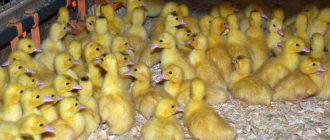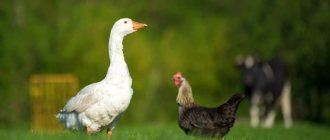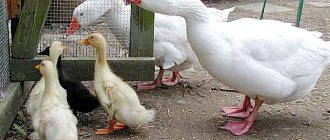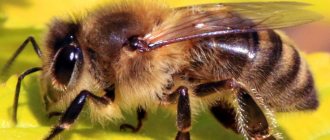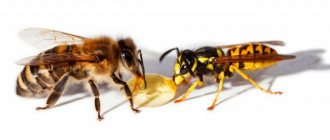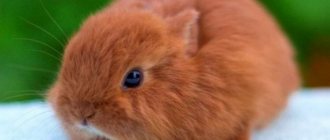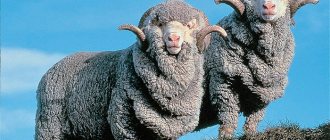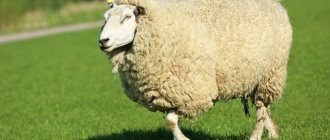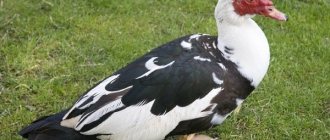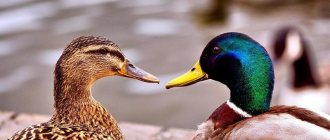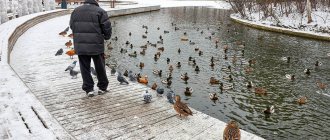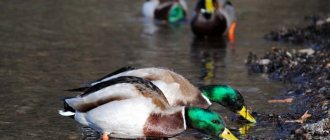It seems that there is no task as simple as distinguishing a drake from a duck among Indian ducks, but in fact, only adult birds are noticeably different. At the same time, novice farmers buy small ducklings or hatching eggs, and it is difficult to distinguish the young animals by sex. However, this is important, because the living conditions for ducks and drakes are slightly different, and balance in the flock must be maintained: an excessive number of females or males will lead to a decrease in the productivity of the birds.
What kind of poultry is best raised for meat?
What kind of poultry is best to raise for meat? Recommended breeds of ducks: Peking, Bashkir white-breasted (they gain weight the fastest). Recommended breeds of geese: Tula and Kholmogorovsky (they are more difficult and expensive to raise, but they produce a lot of meat). The Lindov and Italian breeds are easier to maintain.
Interesting materials:
What is there in the Kazan Kremlin? What does every car have? What is there in the Kiev Pechersk Lavra? What's in McDuck? What's in the soil? What's in onions? What is there in the safari park in Gelendzhik? What is there in the Sochi Arboretum? What's in dill? What's inside the battery?
How do Indo ducks differ from ducks of another breed: the main differences
I heard that there is an opinion among people that Indoutka is a hybrid of a duck and a turkey. I would like to find out how the Indoutka differs from an ordinary duck and how this is expressed.
The Indian duck is not a hybrid cross between a duck and a turkey, it is a separate species - the Muscovy duck, which belongs to wood ducks, and not to waterfowl, like the mallards that are familiar to everyone. The name "Indoutka" comes from the words "Indian duck". It was given to the bird because they were bred en masse by the Indians.
The difference between these ducks can be seen already in appearance. The exterior of the Indoutok is different in that:
- their body is long, wide, the chest is medium in width, an elongated head on a short neck;
- there are fleshy, leathery red growths on the face and above the beak, and between the base of the beak and the nostrils there is a fleshy bump, which other duck breeds do not have. In drakes these growths are larger than in females;
- Another difference is that muskies have a crest of feathers on their heads that rises when the bird is frightened.
When crossed with female ducks of other breeds and Muscovy drakes, hybrids are obtained - Mulards, which are in many ways similar to Indo-ducks.
Indo-ducks also differ in that they eat less, but grow longer, so they will have to be fed approximately 1.5 times longer. However, increasing the fattening period is fully justified: the meat of musk ducks is of better quality than that of ordinary ducks. It tastes better, it has more muscles, it is not at all fatty (dietary). The meat is tender in texture, it does not have the specific smell inherent in waterfowl, it tastes somewhat similar to game meat, but is more nutritious than that of broiler chickens.
Expert opinion
Irina Titova
Poultry expert
The difference between ordinary ducks and Indo ducks is also present in the characteristics of the meat themselves. For example, in the carcasses of Peking ducklings the share of muscles is 35%, and subcutaneous fat and skin account for 31-37%. In Indo-Ducks, the percentage of muscle mass is higher - 43-48%, the main part of it is the pectoral muscles, the percentage of fat and skin is much less - 20-25%. The slaughter yield of Indo-ducks is 8-10% higher than in Beijing.
Indo-ducks differ from other ducks in their character: they are calm, sociable, not noisy, do not scream, but only quietly hiss (drakes), while ducks can scream only when frightened, for example, when they are caught. Their movements are also peculiar - when the bird walks, it moves its head back and forth.
It is possible to keep Indo-ducks in your homestead without the obligatory walk to a pond: they spend much less time in the water than mallards and can do without open water at all since they are classified as arboreal.
They differ favorably from other ducks in that they are good hens, breed offspring and raise them well, and their duckling mortality rate is the lowest or none at all. The brooding period for most ducks is 28 days; for musk ducks it lasts 33-35 days.
What else to read:
Is it possible to give zucchini to ducks and ducklings: at what age and in what quantities?
How and where do domestic and wild ducks sleep, for how long and how often?
Do wild and domestic ducks eat fish: how to give it correctly, as well as fishmeal
How many ducks should there be per drake for normal egg fertilization?
Other nuances and interesting surprises
To understand how to distinguish an Indian duck by gender, you can listen to the “conversations” of the pets. Ducks make loud calls (the familiar “quack”) or quietly “talk” with sounds similar to “hic” or “uk.” Their partners do not scream or “chat”, but only hiss, opening their beaks. If they feel threatened, they will not only hiss, but also raise the crest on their head. Female birds do not have such a crest.
Surprises also happen. So, even if you accurately determined the sex of the duck and placed her on eggs, it is not a fact that she will agree with this. Sometimes two females create a pair and then the dominant bird behaves like a drake. She becomes aggressive, bullies other males and refuses to sit in the nest. As a rule, such a nuisance is a consequence of a farmer’s mistake, who does not maintain the gender balance in the flock (there are not enough drakes in it).
The opposite situation also happens. If there is an excess of “men,” some of them demonstrate feminine behavior and even try to nest. There is only one solution: choose the right number of ducks that differ in gender. The flock should have 3-4 ducks per groom.
We also recommend reading the article “Breeding, keeping and caring for Indian ducks at home.”
We hope you found the answer to your question in this article. If it was useful, please like and share the link on social networks. Write about your pets and your experience raising them in the comments.
Definition
The duck is a common bird, of which there are quite a few species in nature. Some breeds are successfully raised by people. The duck is a medium-sized bird. It has an elongated, non-sharp beak and a somewhat elongated neck. The color of the plumage is very diverse. The male of this bird is a drake.
Duck
Indo-duck is popularly called the Muscovy duck. In the wild, the bird lives in large numbers in South America and Mexico. There it was domesticated by humans. Gradually, the musk duck was brought for breeding to other parts of the Earth.
Indian
Let's understand the terms
Muscovy duck has several names. The main thing - musk - comes from the smell of fat secreted from their growths on the head, which resembles musk. Others believe that the name comes from "Muisque", the name of a tribe of Indians from Colombia. The most common is the Turkey Duck, because many believe that this breed is a cross between a turkey and a duck due to the peculiar growths on the head (especially in the male). However, this is not so, the Indoutka is one of the varieties of wood duck, because it can easily do without a pond.
You can often find another name – Mute, or even “Mute”. They are called this because of their calm nature and silence, because they are always silent, unlike their relatives, or can only create a dull hissing sound. And the last of the original names is the Barbary duck, which is how the French named the breed.
About the dangers of turkey meat
After such a good characterization, is there really anything harmful in turkey meat? There will be some, but not many. This is not even harmful, but contraindications for use. The fact is that the high protein content in the product imposes some restrictions on its use by people with kidney disease, gout, etc. Ignoring this restriction can lead to a significant deterioration in health and exacerbation of the disease.
Significant harm to health can be caused by regular consumption of turkey and at the same time an unhealthy digestive system. This may be indicated by the fact that you feel discomfort every time you eat musky duck meat.
Individual intolerance to Indian ducks is rare, but it is also impossible to forget about it. If allergic reactions occur, you will have to exclude turkey from your diet.
So, the benefits and harms of meat are truly incomparable, and its disadvantages are more than offset by its value.
When does the Indian hatch her eggs?
The chicks will appear on the 21st day, they must be taken away immediately so that the duck does not peck. When the clutch consists entirely of chicken eggs, you can add up to 25 eggs. Goose eggs are larger; 7-9 of them are placed under the egg shell. Hatching lasts 29-31 days.
Interesting materials:
What is vitamin B 12 useful for? What is wrestling good for? What is the blanket for? What is a hydraulic pump used for? What is a quadcopter designed for? What is cache memory used for? What is the purpose of recess at school? What is the purpose of the compass system? What is the package installer application for? What is the tailstock of the machine used for?
How to choose a good Muscovy duck
To appreciate the taste and benefits of Indian duck meat, you need to be able to not only cook it correctly, but also choose a good specimen. To do this, it is advisable to use some simple tips.
- Firstly, despite the fact that the cost of goods on the market may be slightly higher than the store price, it is still better to buy musk duck at the market, because it tastes better there. Frozen turkeys don't have as much flavor when they come out.
- Secondly, there is no need to be embarrassed to inspect the carcass. The color of the skin should be beige, without yellow bloom, spots or damage. When you touch it, it should not feel sticky or leave a fingerprint. Fresh skin is very elastic.
- Thirdly, the meat cannot be sticky either. Only moist, pale pink or light red meat can be called fresh.
- Fourthly, the smell of the carcass should not be disgusting; it should have a pleasant aroma.
- Fifthly, it wouldn’t hurt to ask how old the bird is. It is best to take one that is no more than six months old (give or take). It is difficult to cook a bird that is too old and juicy and tender.
Sex determination in young animals
When the ducklings have just hatched, it is almost impossible to distinguish a duck from a drake, especially for an inexperienced person. But there are tricks that will help you understand whether the person in front of you is a boy or a girl.
Thus, from birth, male Indian ducks have a rudimentary organ called a pseudopenis. Finding it is difficult, but possible.
Take the duckling and place it in your palm with its beak facing you. The skin of the cloaca needs to be slightly stretched. On the drake you will notice a spiral-like appendage. It is tiny, only 0.5-2 mm, but females do not have this. They only have small spherical growths.
For an inexperienced farmer, this method of distinguishing a male from a female is not easy, but it is 100% accurate.
A less accurate but acceptable option is to simply inspect the ducklings. Boys' down is darker. This is especially noticeable if birds of different sexes are together.
Whoever is more cocky is the drake
If you are at a loss as to how to distinguish a female from a male, watch the birds. Boys and girls behave differently.
Already from the age of two weeks, the little drake is distinguished by its liveliness and aggressive, cocky behavior. As a rule, he comes into conflicts with other male chicks, so other males can be identified in this way. The most pugnacious duckling is the future leader of the flock.
Girls are much calmer, because their task is to bear offspring under the protection of drakes, they do not enter into conflicts, and in case of danger they would rather run away than fight back.
When walking or swimming, the drake differs from the female in that it always stays behind her and the ducklings, letting them go ahead. This is how he controls the environment, monitoring the situation so that in case of danger he can quickly come to the rescue. Thus, the question of how to distinguish a male in Indian ducks can be answered: by his readiness to protect his friend. Only when the duck is incubating eggs do the musk bird drakes walk by themselves or in a small group, taking turns giving way to each other.
